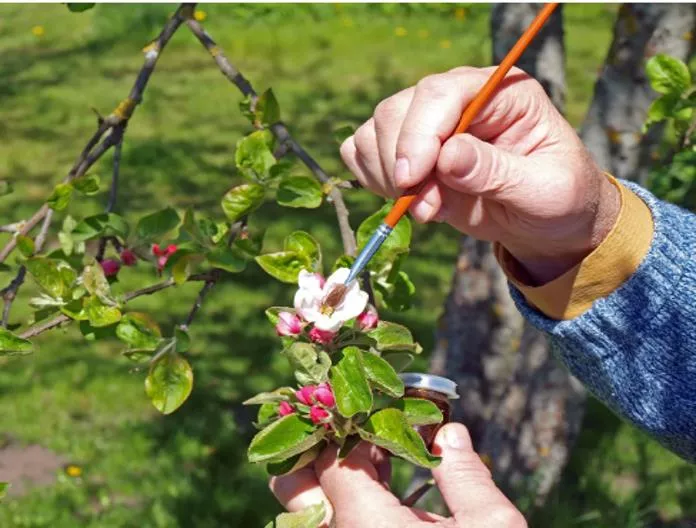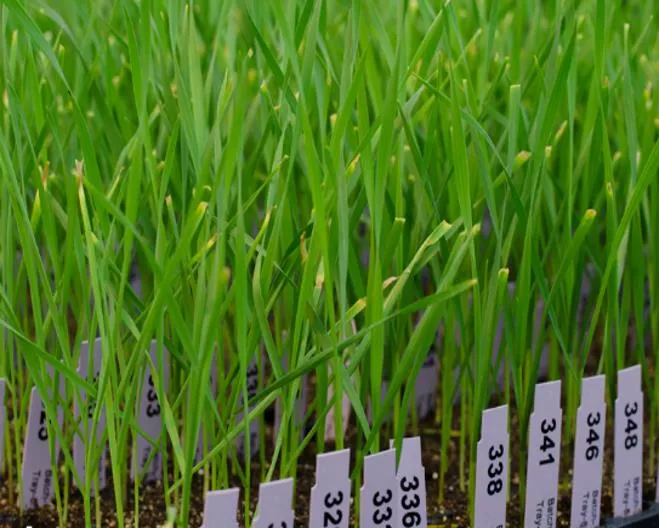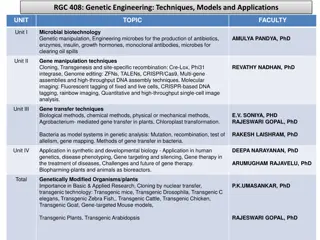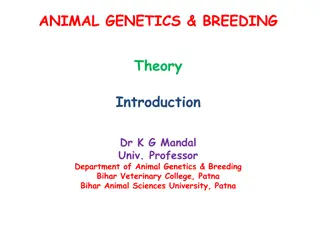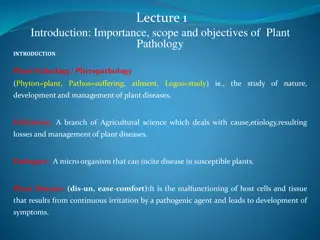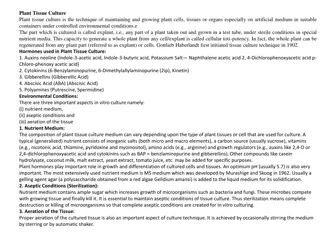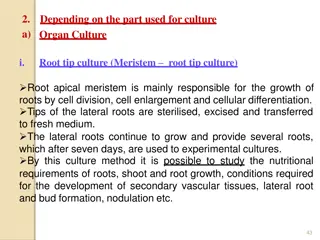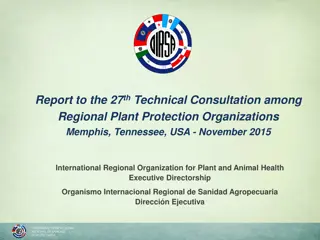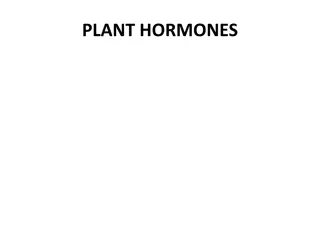Enhancing Plant Genetics for Mankind's Benefit
Plant breeding is both an art and a science, aiming to improve plant genetics for economic use. It focuses on enhancing yield, quality, resistance to environmental factors, and maturity duration. Through breeding techniques, specific objectives are targeted for each crop, leading to the development of desirable varieties. The ultimate goal is to create plants with enhanced characteristics that benefit agriculture and meet diverse human needs.
Download Presentation

Please find below an Image/Link to download the presentation.
The content on the website is provided AS IS for your information and personal use only. It may not be sold, licensed, or shared on other websites without obtaining consent from the author.If you encounter any issues during the download, it is possible that the publisher has removed the file from their server.
You are allowed to download the files provided on this website for personal or commercial use, subject to the condition that they are used lawfully. All files are the property of their respective owners.
The content on the website is provided AS IS for your information and personal use only. It may not be sold, licensed, or shared on other websites without obtaining consent from the author.
E N D
Presentation Transcript
Plant breeding can be defined as an art and science and technology of improving the genetic make up of plants in relation to their economic use for the man kind. or Plant breeding is the art and science of improving the heredity of plants for the benefit of mankind. or Plant breeding deals with the genetic improvement of crop plants also known as science of crop improvement.
Plant breeding aims to improve the characteristics of plants so that they become more desirable agronomically and economically. The specific objectives may vary greatly depending on the crop under consideration.
1. Higher yield : The ultimate aim of plant breeding is to improve the yield of economic produce on economic part . It may be grain yield, fodder yield, fibre yield, tuber yield, cane yield or oil yield depending upon the crop species. Improvement in yield can be achieved either by evolving high yielding varieties or hybrids. 2. Improved quality: Quality of produce is another important objective in plant breeding. The quality characters vary from crop to crop. Eg. grain size, colour, milling and baking quality in wheat. Cooking quality in rice, malting quality in barley, colour and size of fruits, nutritive and keeping quality in vegetables, protein content in pulses, oil content in oilseeds, fibre length, strength and fineness in cott on.
3. Abiotic resistance : Crop plants also suffer from abiotic factors such as drought, soil salinity, extreme temperatures, heat, wind, cold and frost, breeder has to develop resistant varieties for such environmental conditions. 4. Biotic resistance : Crop plants are attacked by various diseases and insects, resulting in considerable yield losses. Genetic resistance is the cheapest and the best method of minimizing such losses. Resistant varieties are developed through the use of resistant donor parents available in the gene pool.
5. Change in maturity Duration / Earliness : Earliness is the most desirable character which has several advantages. It requires less crop management period, less insecticidal sprays, permits new crop rotations and often extends the crop area. Development of wheat varieties suitable for late planting has permitted rice-wheat rotation. Thus breeding for early maturing crop varieties, or varieties suitable for different dates of planting may be an important objective. Maturity has been reduced from 270 days to 170 days in cotton, from 270 days to 120 days in pigeonpea, from 360 days to 270 days in sugarcane.
6. Determinate Growth : Development of varieties with determinate growth is desirable in crops like mung, pigeon pea (Cajanus cajan), cotton (Gossypium sp.), etc. 7. Dormancy : In some crops, seeds germinate even before harvesting in the standing crop if there are rains at the time of maturity, e.g., greengram, blackgram, Barley and Pea, etc. A period of dormancy has to be introduced in these crops to check loss due to germination. In some other cases, however, it may be desirable to remove dormancy.
8. Desirable Agronomic Characteristics: It includes plant height, branching, tillering capacity, growth habit, erect or trailing habit etc., is often desirable. For example, dwarfness in cereals is generally associated with lodging resistance and better fertilizer response. Tallness, high tillering and profuse branching are desirable characters in fodder crops.
9. Elimination of Toxic Substances : It is essential to develop varieties free from toxic compounds in some crops to make them safe for human consumption. For example, removal of neurotoxin in Khesari lentil (Lathyruys sativus) which leads to paralysis of lower limbs, erucic acid from Brassica which is harmful for human health, and gossypol from the seed of cotton is necessary to make them fit for human consumption. Removal of such toxic substances would increase the nutritional value of these crops
10.Non-shattering characteristics: The sha ttering of pods is serious problem in green gram. Hence resistance to shattering is an important objective in green gram. 11.Synchronous Maturity : It refers to maturity of a crop species at one time. The character is highly desirable in crops like greengram, cowpea, castor and cotton where several pickings are required for crop harvest. 12.Photo and Thermo insensitivity: Development of varieties insensitive to light and temperature helps in crossing the cultivation boundaries of crop plants. Photo and thermo- insensitive varieties of wheat and rice has permitted their cultivation in new 7 areas. Rice is now cultivated in Punjab, while wheat is a major rabi crop in West
engal. 13.Wider adaptability: Adaptability refers to suitability of a variety for general cultivation over a wide range of environmental conditions. Adaptability is an important objective in plant breeding because it helps in stabilizing the crop production over regions and seasons. 14.Varieties for New Seasons: Traditionally maize is a kharif crop. But scientists are now able to grow maize as rabi and zaid crops. Similarly, mung is grown as a summer crop in addition to the main kharif crop.



